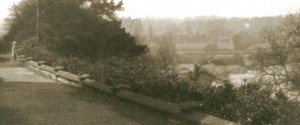Emanuel Lovekin (1820-1905): An Introduction
Choosing a memoir to study proved to be difficult however it was Emanuel’s story which really captivated me from the beginning. Born 3 March 1820 he began writing his memoir, ‘some notes of my life’ when he was a mere 45 years old. Emanuel grew up in Shropshire. His memoir consists of 32 pages and although there were a few grammatical errors and spelling mistakes, his writing flowed and I felt that I was finding out more about his character than I would if there were no errors at all.
Growing up with 8 other siblings, his childhood was not discussed in great detail. He does, however, mention his father being a skilled furnace man who ‘got very good wage.’ With his father’s description mainly being about him being a working man, Emanuel describes his mother in great detail saying that she was ‘a big strong woman and not cast down with a little thing, but struggled through with a family of 7 sons and two daughters, with a man that did not seem to take very little interest in home matters.’ His father, who was perhaps always working, may have influenced Emanuel’s path in life to work hard and achieve success through manual labor.

Emanuel proclaims that he was born ‘when schooling was not thought very much of among the proper people’ and he therefore first started working in a coal pit at the age of 7 ½ years. At the age of 13, an injury forced him to stay in bed for 13 weeks where he ‘began to feel very strongly the desires to learn to read.’ Even though he could not work and could not help provide for his family, he was determined more than ever to still make something of his life. While allowing young men, who he knew of, to read at his bedside, he decided to further his education by enrolling in night school. He then progressed to various different careers, throughout his life, where he was a tramping navvy working various jobs and which made him quite a bit of money. He was then tunneling for the new railways to then become a colliery manager, a mining engineer and finally an inspector of mines where he then retired at the outstanding age of 79.
Working from the mere age of 7 ½ years old to retire at 79 sounds tiring but did you know that he also, as well as his careers, became a passionate Primitive Methodist and active Sunday School worker. He became superintendent and class leader. Emanuel was also secretary of local branch of Chartists and went to many events in order to help the working class people gain political rights and influence. His role in the Church, and his faith in God, is evident throughout his memoir as he continuously thanked God for the life he was given.
“But I am glad and pleased god keep me so I can read things and please him for what I am”
This very quote, written on his last page before he died, really sums up for me Emanuel Lovekin’s life in his memoir. Emanuel understood his class but what mattered to him was to experience his life as best as he could because life, for him, was sacred. Just because he was from a lower class did not stop him from achieving what he wanted to do. In his childhood he was surrounded by his 8 other siblings. As Emanuel grew up, his family grew even bigger as he also was married twice with 14 children. Like his father he may have not spend a lot of time in home matters while his children were growing up however he did make sure that his family had the best possible life.
Emanuel’s memoir really is real life. Not everything that he strived for worked out for him and he was not always successful with the paths he chose. But at the end of it, he was always happy. His determination and hard work was a success for him in that it proved that he felt he did not need tremendous amounts of money to be content in life.
Bibliography
Lovekin, Emanuel. ‘Some notes of my life’, MS, pp.32 (c.7,000 words). Extract in J. Burnett (ed.), Useful Toil. Autobiographies of working people from the 1820s to the 1920s (Allen Lane, London, 1974), pp.290-6.
Darwin’s Garden http://data.wildlifetrusts.org/sites/default/files/imagecache/reserve_web_large/sites/default/files/Terrace%20late%201800s.jpg

Leave a Reply